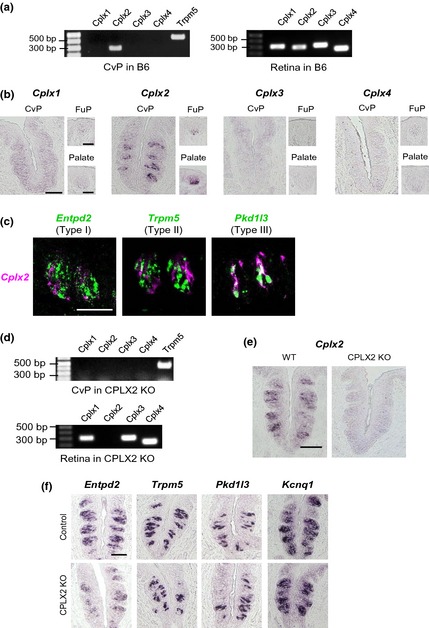Figure 1.

Expression of complexin (Cplx) family members. (a) RT‐PCR of Cplx family mRNAs (Cplx1–Cplx4) in the circumvallate papillae (CvP) and retina of C57BL/6J (B6) mice. (b) In situ hybridization (ISH) of Cplx family mRNAs (Cplx1–Cplx4) in the CvP, fungiform papillae (FuP), and soft palate (Palate) of B6 mice. (c) Double labeled ISH of Cplx2 (magenta) and taste marker molecules (green) in the CvP of B6 mice. Entpd2, Trpm5, and Pkd1l3 were used as markers of type I, II, and III cells, respectively. (d) RT‐PCR of Cplx family mRNAs (Cplx1–Cplx4) in the CvP and retina of CPLX2‐knockout (KO) mice. (e) ISH of Cplx2 mRNA in wild‐type (WT) and CPLX2‐KO mice. (f) ISH of taste marker molecules in control (C57BL/6J or WT) and CPLX2 KO mice. Type I taste cell marker: Entpd2. Type II taste cell markers: Trpm5. Type III taste cell markers: Pkd1l3. Taste bud marker: Kcnq1. Signals for all marker molecules were observed in CPLX2‐KO mice. Scale bars show 50 μm in the CvP and 20 μm in the FuP and Palate.
